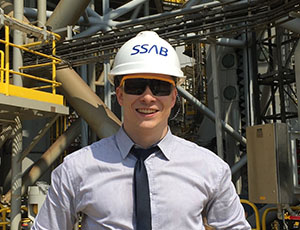Around the world - 144 times
Name: Juha Erkkilä
My work: Technical Manager, SSAB Helsinki
45 years – that’s how long we at SSAB have been working with high strength steels – and that’s how long we, at least, have been working towards a more sustainable future. But what is a product without a market? That would be just an idea.
Therefor during these past 45 years we have also been constantly working to develop the market to adopt high strength steels in various applications.
I’ve myself have had the pleasure of working together with our customers on five different continents in developing solutions which contribute towards a more sustainable future.
This work is being continuously done by hundreds of people at SSAB around the world who go around suggesting if something could be done smarter. Hats off to these people - it is not easy to change perceptions, but decades of experience has shown that clear results can be obtained rather quickly once you put your mind to it.
These days I work with SSAB Services in the rather newly established engineering service function where we are basically doing the full range of product development work for our clients. This means converting old designs into something that is lighter, stronger and you know it – more sustainable.
In fact one of our targets is reducing CO2 emissions from our customers application. In the beginning of every product development project we made a priorization together with the customer where one metric is a matrix of four parameters: cost, performance, weight and sustainability.
Many times sustainability is where the biggest gains are shown. If a trailer is lighter, it will perform better since it carries more payload and it can also be cheaper to produce since less material and less welding is required. However, the biggest gains are seen in sustainability since the CO2 footprint of the applications that we typically work with have more than 90% of CO2 emissions coming from the use phase of the application while the remainder is down to production.
This might mean that if an excavator bucket was 30% lighter it might actually mean that the fuel consumption is reduced by a whopping 230 000 liters of fuel during the lifetime which also translates to close to 700 tons of CO2 saved. How much is 700 tons of CO2? Well, an average car in Europe emits 119 grams of CO2/km so it would be the same thing as driving a car for close to 6 million kilometers which equals to drive around the world 144 times.
